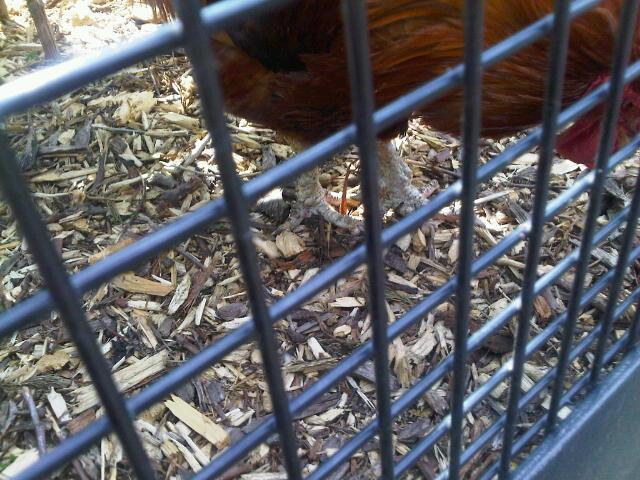Hi,
I've been visiting the aviary at a local park for the last few days to see the chickens they keep there. Today I got a good look at them close-up as I'd taken a bag of feed with me. I noticed that some of the chickens have very unpleasant-looking feet and legs and suspected it might be scaly leg mite. I've done some more reading since I got home and I'm fairly sure that's what it is. The chicken's feet look like they've been dipped in grey plaster and they look more like the lumpy-bumpy (and for me) bile-inducing feet on tortoises.
My question is - if this is indeed scaly leg mite, what should I do?
P.S. One of the chickens also had a gammy leg. When we scattered feed for them it limped its way over with its toes curled under, walking on the knuckles of its left foot.
I've been visiting the aviary at a local park for the last few days to see the chickens they keep there. Today I got a good look at them close-up as I'd taken a bag of feed with me. I noticed that some of the chickens have very unpleasant-looking feet and legs and suspected it might be scaly leg mite. I've done some more reading since I got home and I'm fairly sure that's what it is. The chicken's feet look like they've been dipped in grey plaster and they look more like the lumpy-bumpy (and for me) bile-inducing feet on tortoises.
My question is - if this is indeed scaly leg mite, what should I do?
P.S. One of the chickens also had a gammy leg. When we scattered feed for them it limped its way over with its toes curled under, walking on the knuckles of its left foot.






